I find it really satisfying to put my garden to bed in the fall, in part, because I get great pleasure out of restoring order to the garden — everything looks so neat and tidy once again. I blame my German heritage for my compulsion for order and tidiness. Unfortunately for me, maintaining this look is a constant battle and one that I only really win in the fall…oh well.

But putting my garden to bed also gives me a chance to reflect on the season just passed and an opportunity to plan for next spring. In planning for and ensuring a healthy garden next season, there is one vital chore that needs to be done in the fall and that’s amending the soil. A small task that comes with big returns.
Healthy Soil = A Healthy Garden
I think as gardeners many of us have a tendency to overlook the importance of our garden soil. We find ourselves fussing over the plants – choosing the best-looking, most vigorous, and healthiest ones to plant in our gardens. Then we pamper them and fertilize and fertilize again because the basis of our gardening success depends on how well those plants grow.
But our focus here is a bit misplaced.
We need to remember that a garden’s success is much more dependent on the quality of our soil than the quality of our plants. Your garden’s soil is the very foundation upon which everything else is built – without healthy soil, you simply won’t be able to grow healthy plants no matter how much fertilizer or pampering you provide.
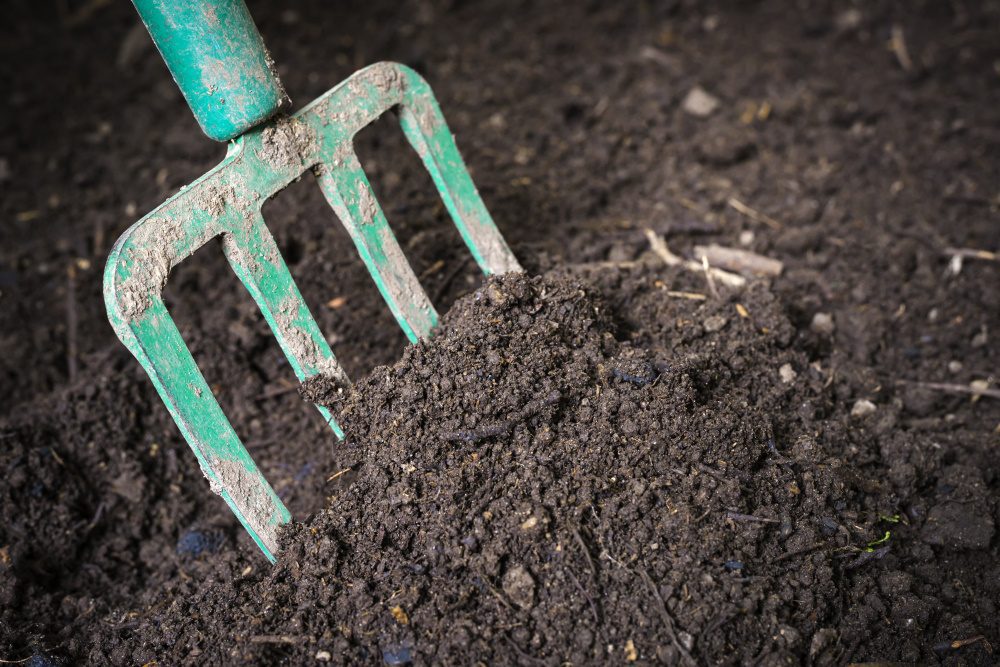
Healthy soil is teeming with life — from macro-organisms like earthworms and pill bugs down to the microorganisms like bacteria, fungi, and microbes. These organisms are doing the essential work of breaking down and converting organic materials like compost, leaves and rotted manures into nutrients that feed our plants, and by extension, feed ourselves.
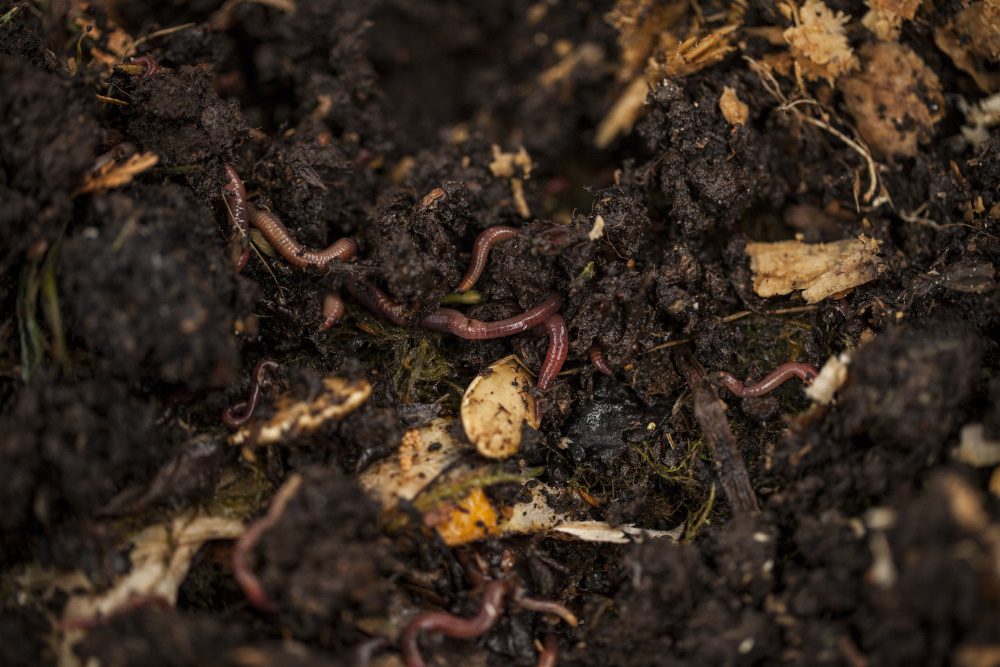
Compost and Organic Matter
Unlike synthetic fertilizers, organic soil amendments take time to improve the soil. When organic materials are added in the fall, its nutrients slowly work their way into the soil. For example, organic materials like leaf mold and rotted manures will gradually break down over the winter for improved soil in the spring.
Earthworms and other soil macroorganisms do a fantastic job of breaking down organic materials. Also, oxygen-loving bacteria and fungi improve soil by producing ammonium as they consume organic material which then provides available nitrogen for healthy plant growth.
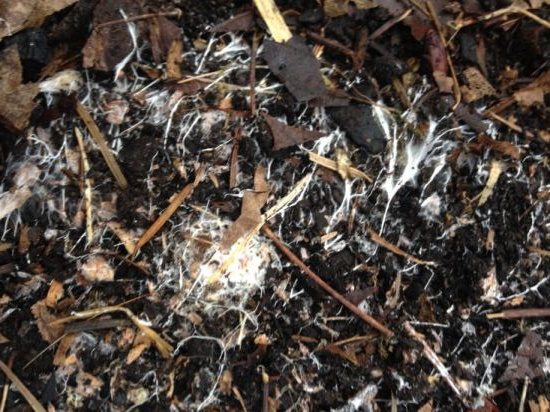
Great Returns to the Soil
Along with feeding the soil, compost and organic matter promote moisture retention and good drainage. They also greatly improve soil texture, especially in sandy or clay soils.

Other benefits include:
- Encouraging the production of beneficial bacteria and fungi that break down the organic matter.
- Reducing the need for chemical fertilizers (saving time and money).
- Reducing methane emissions that arise from landfills and lowering your carbon footprint.
According to the US Composting Council, food scraps and yard waste together make up more than 30 percent of what we throw away – all of which could be composted!
Composting Basics
At the most basic level, compost is a soil amendment made from organic matter such as leaves and food scraps that have been transformed over time into a nutrient-rich humus.
Compost consists of two types of organic matter: carbon-rich brown matter and nitrogen-rich green matter. Brown matter includes materials such as straw, leaves, pine needles, wood shavings and sawdust, dead plant debris, and small branches from pruning. Shredded paper and newsprint are also considered brown material.
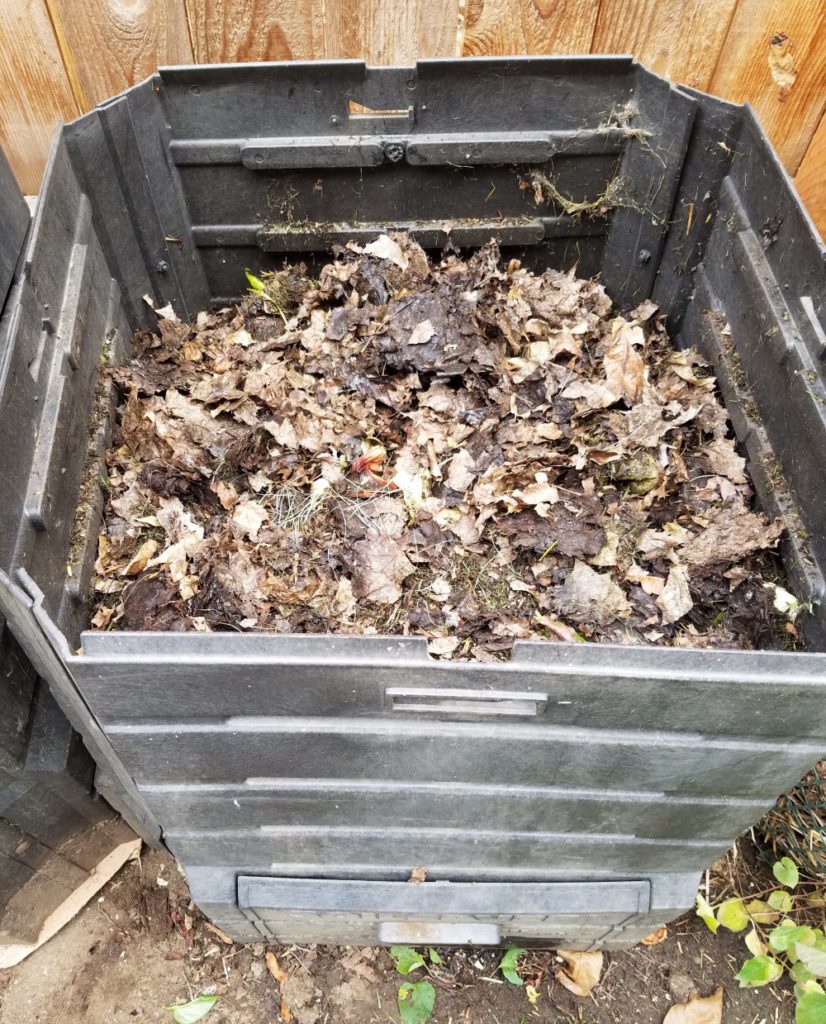
Green matter includes grass clippings, kitchen food scraps from vegetables and fruit, various weeds (without seed heads), the droppings from small animals like rabbits, guinea pigs, and hamsters, and of course, manure from farm animals such as chickens, goats, horses, and cattle.
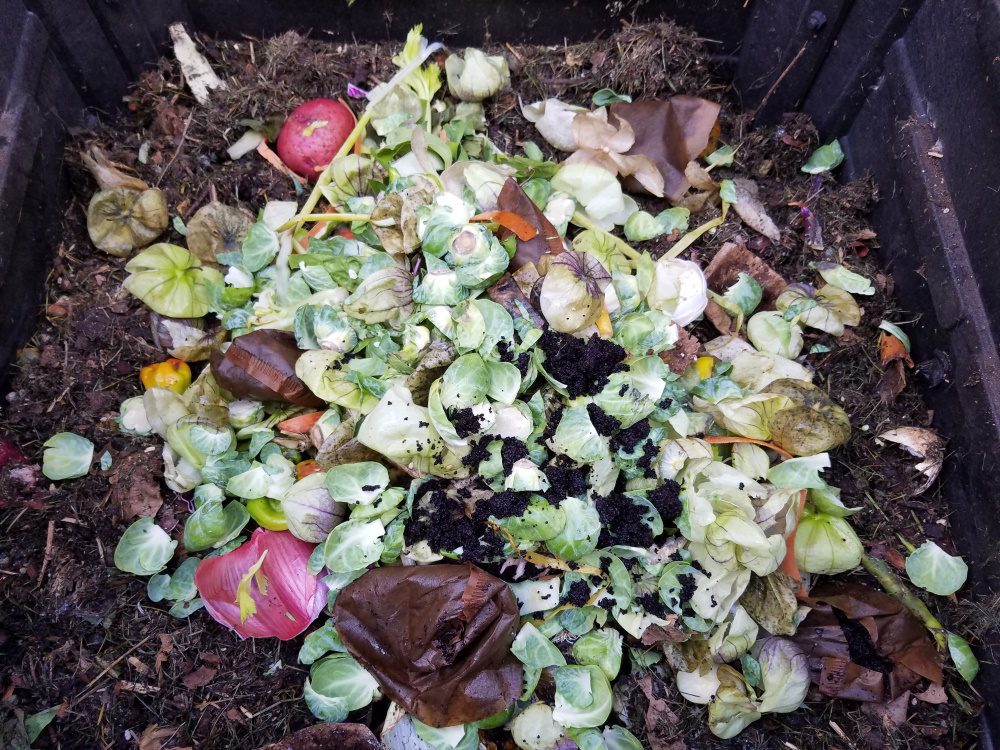
When adding animal manure to compost, keep in mind that the manure may contain weed seeds, especially manure from cows and goats. Also, some manures can be very high in nitrogen such as chicken manure. For these reasons, you never want to put fresh animal dung directly into your garden beds.

Getting Started
Composting is fairly simple, yet many gardeners don’t compost because they think the process is too complicated or they think it takes up too much space. Neither is actually true.
There are a few “best-practices” for composting, but these are fairly straightforward, and the compost pile itself doesn’t require a large space. Even if the only thing you do is gather yard waste and leaves in a bin or a pile, it will eventually turn into useful compost. It’s as simple as that.
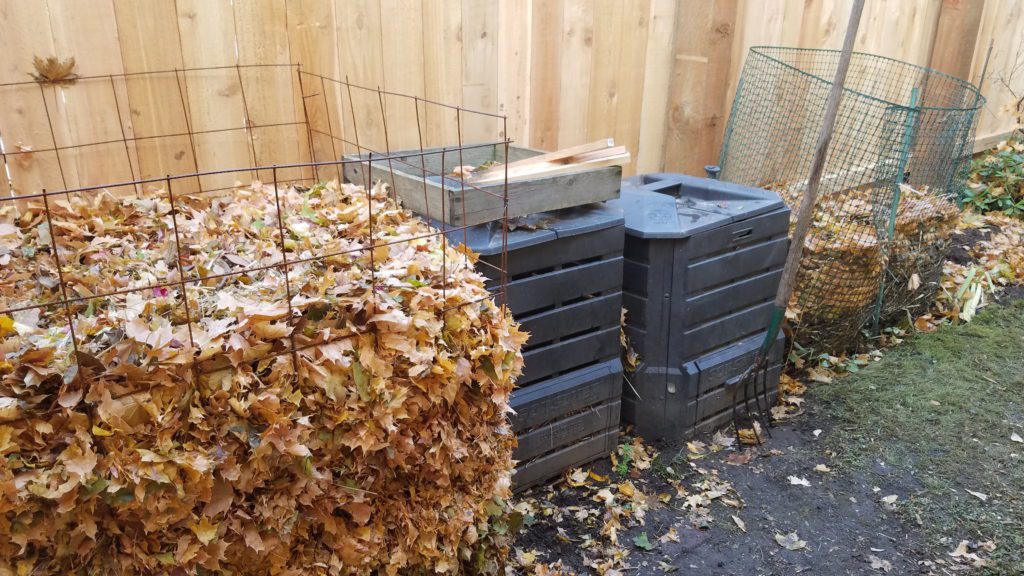
Here are a few of the composting best practices to get you started:
- When starting a new compost pile, add a 6- to 8-inch layer of brown material at the bottom of the pile.
- Add compost material in layers (similar to making a lasagna), using more brown material than green material. A good ratio to aim for is two-thirds brown material to one-third green material.
- Add water when needed to keep the pile moist and cover with a tarp or bin lid to retain moisture.
- Animal manure must be well rotted, fully decomposed, and thoroughly incorporated into the compost pile before distributing it on your garden.
- NEVER add feces from dogs or cats or used cat litter – all of these can contain harmful pathogens and bacteria.
- Do not add diseased or insect-infested plant material to your compost pile. These materials should always go in the garbage and not in your compost pile.
- Do not add grass clippings that have been treated with an herbicide. Weed and feed or weed-killing products can leach out of the compost and may damage your plants.
- Do not add meat or dairy products as these products can attract unwanted pests and produce an unpleasant smell.
Caring for Your Compost Pile
Both water and oxygen are essential for organic material breakdown. This means for proper decomposition to occur; your compost pile should be kept moist and the composting material should be turned over frequently. Your compost pile should be turned each time new material is added. This does two things, first, it buries the new matter allowing it to decompose faster and second, turning the material aerates the pile, allowing space for oxygen.
Your compost pile should never have a “bad” smell. It may smell grassy or like wet leaves, but it should never smell like rotting garbage. If it does smell bad, this may mean the pile might be too wet or it may lack adequate oxygen. Monitoring water and turning the pile more often should eliminate any unpleasant odors.
When the material at the bottom of your compost pile is dark and crumbly, your compost is ready to use. Obtaining this “black gold” can take anywhere from two months to two years depending on the size of the pile, the materials used, and moisture levels.

Sourcing Quality Compost
If you’re not ready to make your own compost, you can purchase quality compost by the bag or in bulk. For small gardens or raised beds, I recommend purchasing a high-quality bagged compost — it’s a quick and convenient way to add an important amendment to your soil.
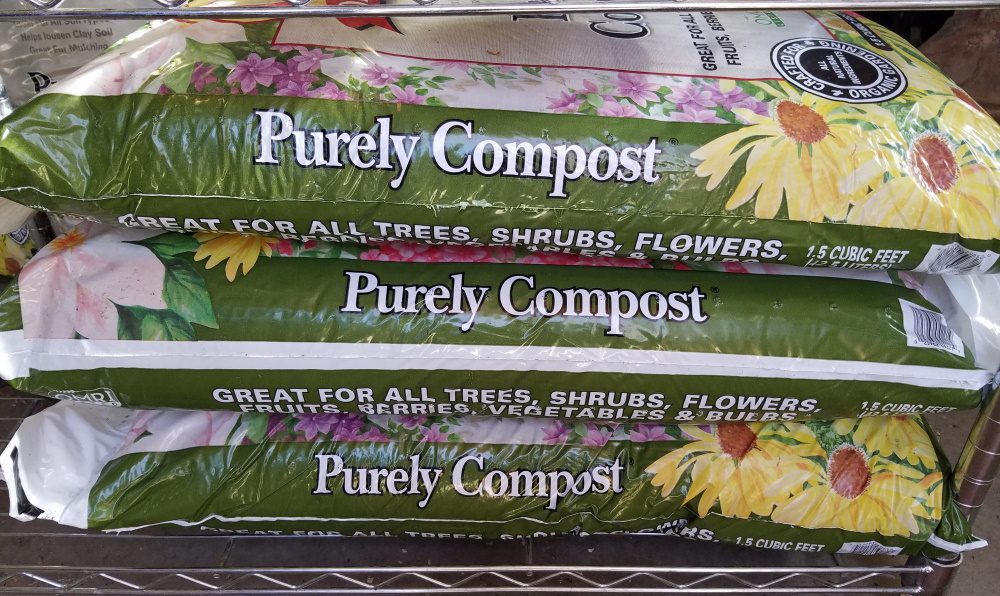
You can also purchase compost in bulk by the truckload from nurseries or garden centers. I recommend that before you purchase, you ask the nursery staff where the compost is from and what it is made of. Some nurseries sell a compost product consisting of sewage sludge or biosolids. The sludge byproducts are processed and treated at high heat to kill any pathogens and then the material is mixed with other organic matter and sold as compost.
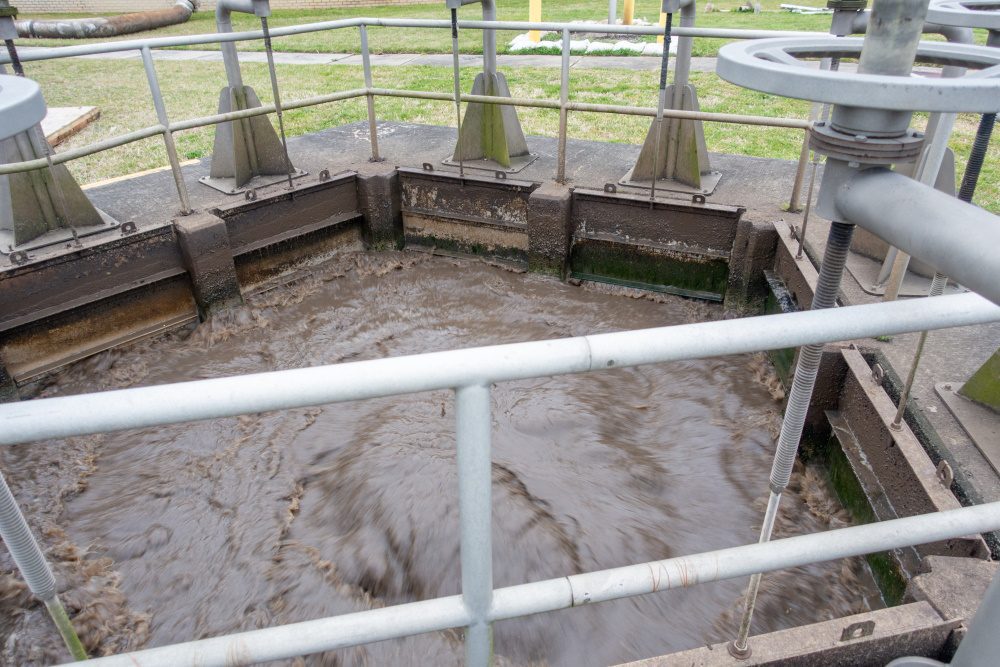
This product is safe for agricultural applications and I have used it on my lawn and in my flower beds, but I’ve not used it on any of my edible plants (and I don’t plan to). Just be aware that this compost product is out there, and you can decide if it is right for your garden.
After a robust growing season, amending your soil with compost in the fall will be a great way to replenish your soil and will mean healthier soil and healthier plants in the spring – without adding any extra and expensive fertilizer.


What about composting in the winter here?
Hi Sherry, I compost year round in north Idaho. The decomposition slows down during the winter months, but I continue to add kitchen scraps, chicken manure from my hens, and brown materials — mostly dried leaves from my leaf bin. I keep it covered so it doesn’t get wet and soggy and turn it to get air throughout on a regular basis. It usually doesn’t freeze, unless we get prolonged cold temperatures. If you are starting a compost pile now, keep it covered and know that it’s not going to do much until things warm up, but you can continue to add material. Hope this helps.